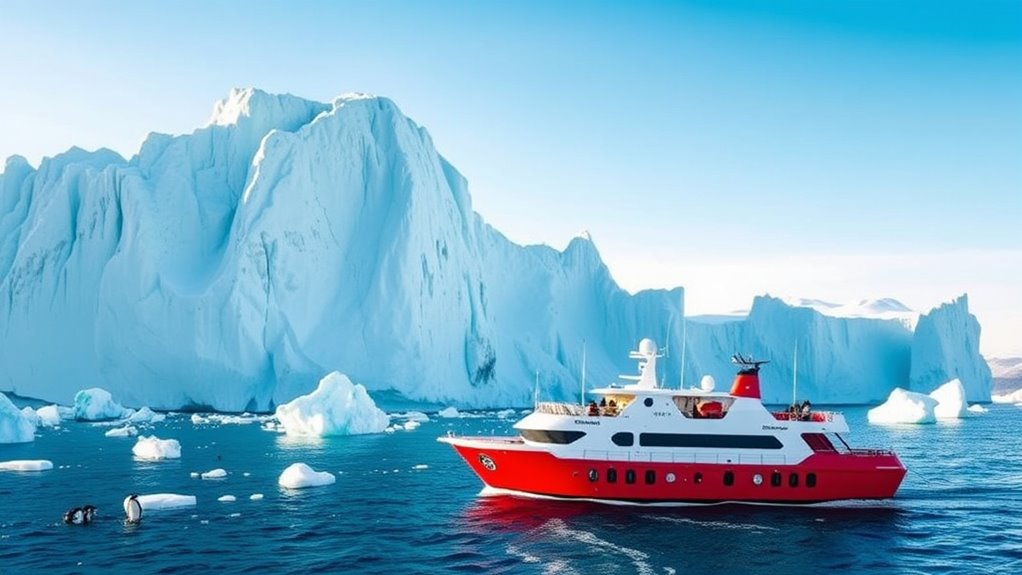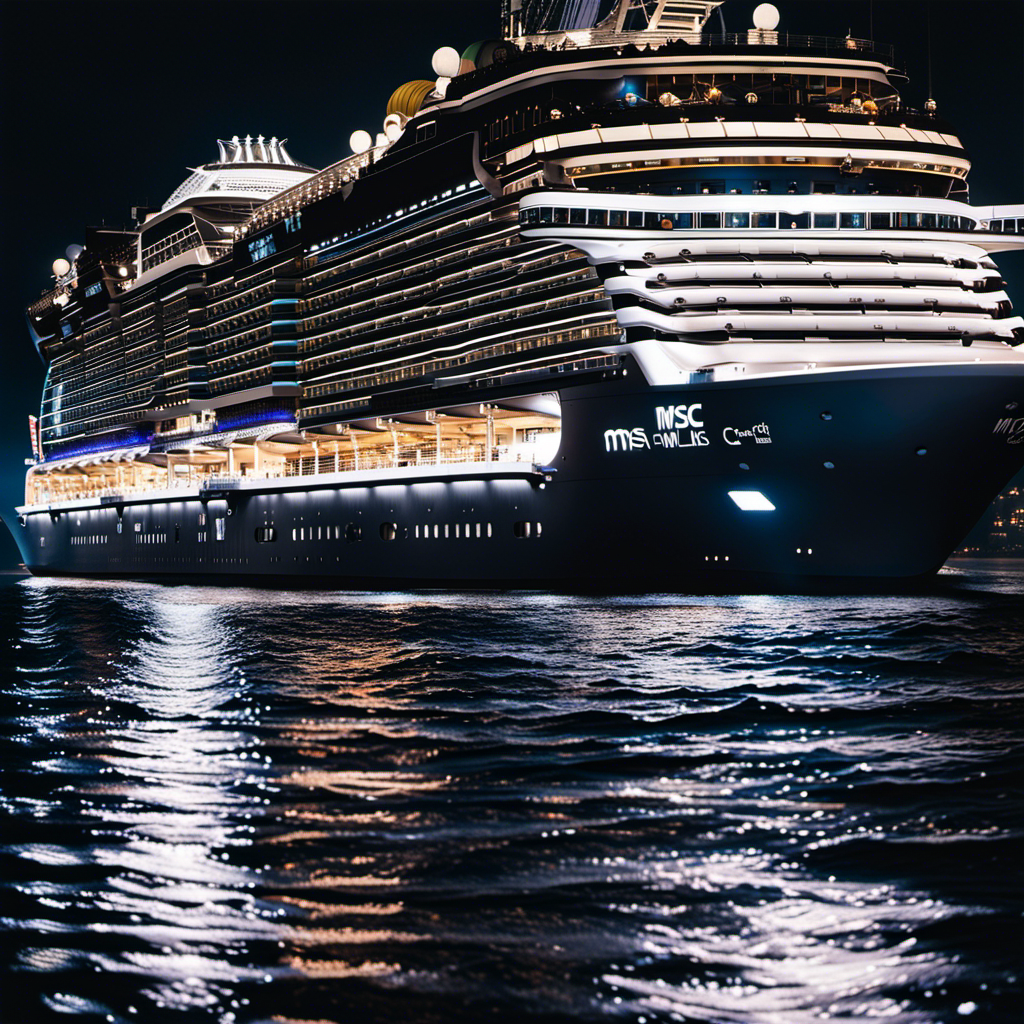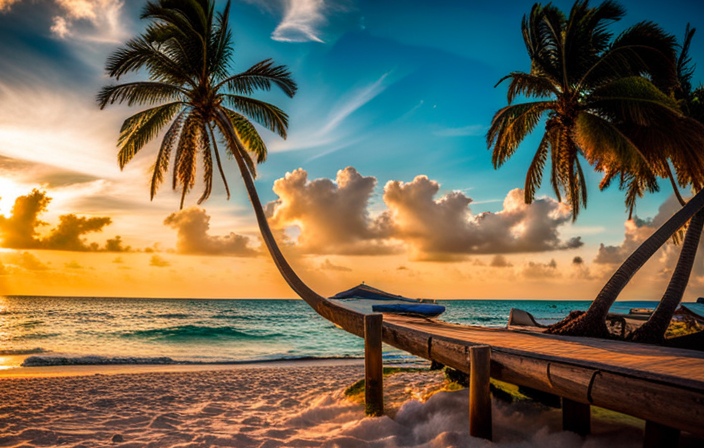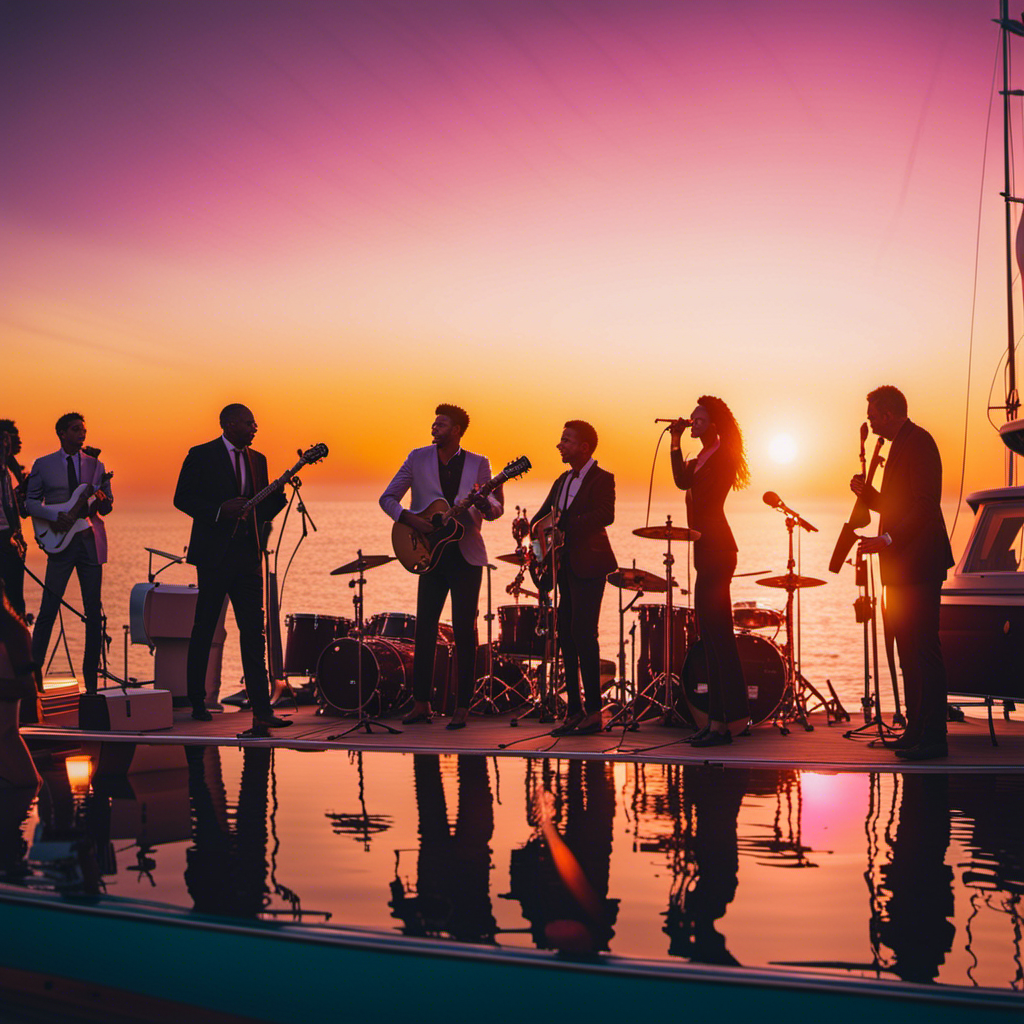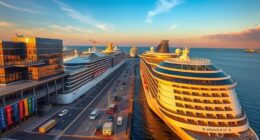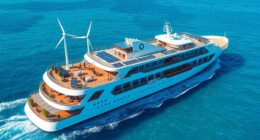An Antarctica cruise offers an unforgettable adventure through icy landscapes, towering glaciers, and incredible wildlife. You’ll explore iconic sites like Deception Island, Paradise Bay, and Brown Bluff, spotting penguins, seals, whales, and seabirds up close. The best time to go is during the summer months from November to March, when wildlife is most active. To fully enjoy this journey, plan ahead and discover how to prepare for the cold, challenges, and unforgettable discoveries awaiting you.
Key Takeaways
- Antarctica cruises offer immersive wildlife encounters with penguins, seals, whales, and seabirds in their natural icy habitats.
- Best travel months are November to March, with peak wildlife activity and longer daylight hours in January and February.
- Excursions include zodiac rides, kayaking, land hikes, and underwater adventures near glaciers, volcanoes, and ice-filled fjords.
- Planning early is essential for securing permits, cabins, and optimal weather conditions for safe exploration.
- Proper gear like layered clothing, waterproof boots, and sun protection ensures safety and comfort in extreme cold weather.
Exploring the Iconic Destinations of Antarctica
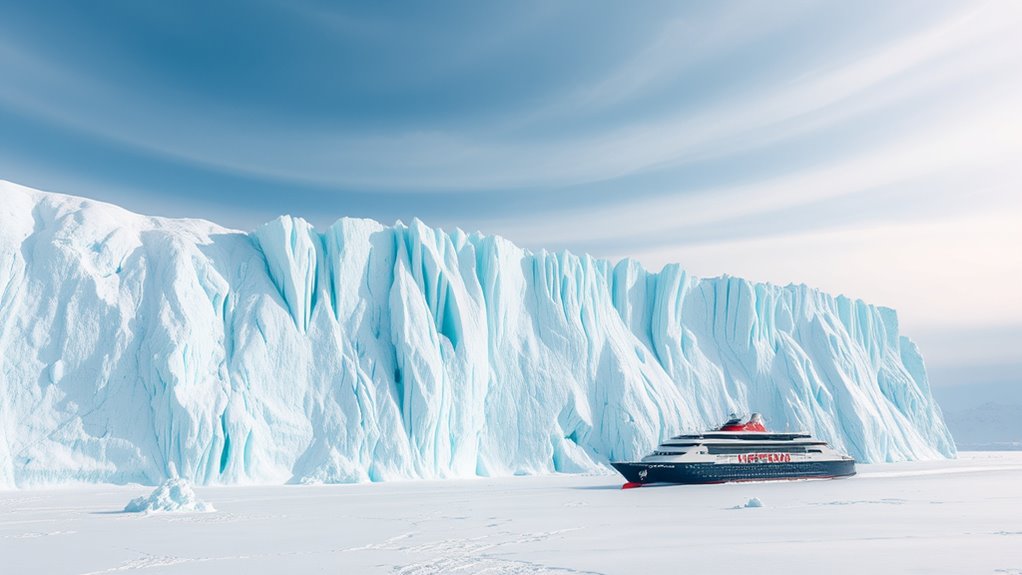
Exploring the iconic destinations of Antarctica reveals a diverse array of breathtaking landscapes and unique wildlife experiences. During your expedition, you’ll encounter the Antarctic Peninsula, where towering mountains and massive glaciers create a dramatic backdrop. This region is rich in wildlife, with penguins, seals, and seabirds thriving amidst icy shores. Icebergs drift nearby, offering spectacular sights and perfect photo opportunities. South Georgia stands out for its large king penguin colonies and historic whaling relics, while the Falkland Islands combine abundant birdlife with cultural and military history. Venturing towards the Antarctic Circle, you’ll witness pristine, untouched environments filled with extreme cold and stunning icy wilderness. Key expedition sites like Deception Island, Brown Bluff, and Paradise Bay showcase volcanic landscapes, fjords filled with icebergs, and vibrant marine life, making each destination uniquely mesmerizing. Additionally, Antarctic wildlife thrives in these remote, icy regions, providing unparalleled opportunities for observing diverse animal species in their natural habitat. The presence of polar ecosystems emphasizes the importance of conserving these fragile environments for future generations, highlighting the global significance of protecting polar biodiversity. Understanding the climate change impacts on these regions underscores the urgency of global conservation efforts. Moreover, sustainable tourism practices are becoming increasingly important to minimize environmental impact and ensure the preservation of these pristine ecosystems for the future.
Best Times to Experience the Antarctic Wilderness

The best time to explore Antarctica is during its summer months from November to March when wildlife activity is at its peak and weather conditions are relatively mild. January and February offer the longest daylight hours and the best chances to see penguins, whales, and other animals up close. As March approaches, temperatures drop, and many species start to leave or molt, signaling the end of prime viewing opportunities. Additionally, aquatic exercise techniques can be incorporated into pre- and post-cruise routines to help travelers stay comfortable and active during their journey, which can also contribute to maximize space and organization by maintaining physical wellness amidst travel. Utilizing AI in Business can further enhance trip planning by providing personalized recommendations and real-time updates on wildlife sightings and weather conditions. Planning trips during this period also allows travelers to experience sustainable travel practices by supporting eco-friendly tour operators committed to conservation efforts. Incorporating sound healing science principles can enhance relaxation onboard, helping visitors connect more deeply with the pristine environment.
Peak Wildlife Viewing Periods
Wondering when you’re most likely to see Antarctica’s incredible wildlife? The peak viewing period is from January to February, when wildlife activity is at its height. During this time, penguin colonies are bustling, seal pups are playful, and whale sightings become common. Early January marks the start of penguin courtship and egg laying, perfect for witnessing breeding behaviors. By late February, molting penguins and migrating whales return, as sea ice melts and opens new areas. Longer daylight hours—up to 20 hours—provide ample time for wildlife encounters and photography. To visualize this, here’s a snapshot:
| Month | Wildlife Highlights | Key Activity |
|---|---|---|
| December | Penguin breeding begins | Egg laying begins |
| January | Penguin colonies active, whale sightings | Peak wildlife activity |
| February | Molting penguins, whale migration | End of peak wildlife season |
Additionally, seasonal changes in ice cover and ocean conditions significantly influence wildlife movements and visibility during this period. Understanding how sea ice dynamics affect access to breeding sites can enhance wildlife viewing opportunities. Moreover, fluctuations in sea ice extent can either restrict or facilitate access to certain areas, influencing the timing and success of wildlife encounters. Recognizing the impact of climate variability on these patterns can help visitors plan more effective wildlife observation trips.
Optimal Weather Conditions
Peak wildlife activity in January coincides with the most favorable weather conditions in Antarctica. During this time, your Antarctica cruise or expedition cruise benefits from milder temperatures, ranging from 41°F to 14°F, and the longest daylight hours, ideal for exploration and photography. The Antarctic waters are more navigable thanks to sea ice breakup from late January to February, making shore landings easier and safer. Weather tends to be more stable and less stormy, providing a smoother journey. While cold wind chills and sudden weather changes are possible, overall conditions are ideal for wildlife viewing and remote excursions. Visiting during this period ensures you experience the continent’s wilderness at its most accessible, vibrant, and lively, with wildlife activity at its peak. Understanding seasonal patterns can help travelers plan their trips for optimal experiences. Additionally, weather stability during this time enhances safety and comfort throughout the voyage, and recognizing climate variability can further assist in trip planning. Moreover, seasonal fluctuations influence both wildlife behavior and sea conditions, so being aware of these patterns can lead to more successful excursions. Being mindful of sea ice conditions can also improve the safety and feasibility of landings during your expedition.
Unique Wildlife Encounters in the Polar Regions
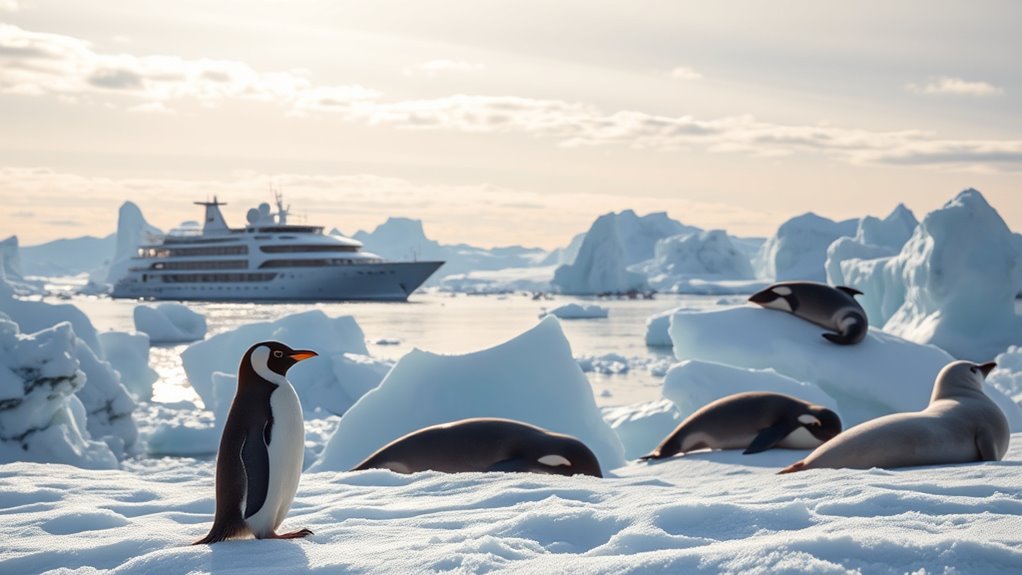
In Antarctica, you’ll encounter an astonishing array of wildlife that thrives in this icy wilderness. Penguins, including Gentoo, Adélie, chinstraps, and emperor species, breed and nest in remarkable colonies, offering unforgettable sights. Seals such as Weddell, leopard, elephant, and crabeater rest on ice floes or swim through icy waters, showcasing their adaptability. You might also witness whales like humpbacks, minke, blue, southern right, and killer whales breaching and feeding near your vessel, providing spectacular encounters. Birdlife is abundant too, with albatrosses, giant petrels, skuas, and petrels soaring overhead or scavenging around penguin colonies. During the summer months, from October to March, wildlife activity peaks, revealing the essential behaviors that sustain this unique ecosystem. For those interested in dog names, choosing a name inspired by the region’s wild animals or landscape can add a special touch to your pet’s identity.
Highlights of Notable Landmarks and Scenic Spots
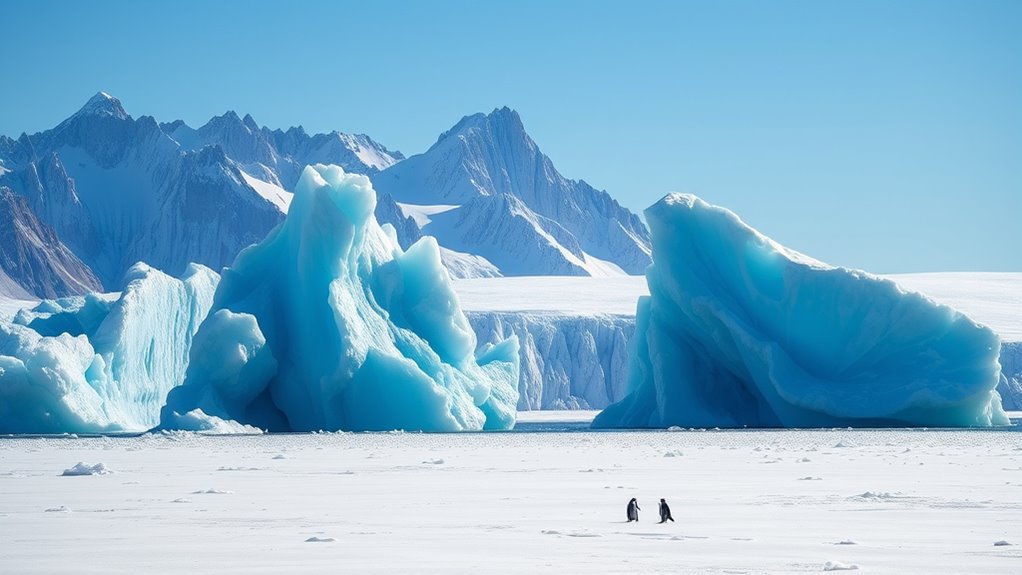
Exploring Antarctica’s landmarks and scenic spots reveals a landscape unlike anywhere else on Earth. During your cruise, you’ll encounter towering volcanic formations like Deception Island, with its calm beaches and large chinstrap penguin colony at Baily Head. Paradise Bay captivates with ice-filled fjords, glaciers, and deep azure ice caverns, offering breathtaking vistas. Brown Bluff features dramatic views of glaciers and rugged coastline, home to over 20,000 Adélie penguins. Half Moon Island stands out for its abundant wildlife, including elephant seals and fur seals, set against icy landscapes. The turbulent Drake Passage adds an adventurous edge, famous for marine life and whale sightings. These scenic spots showcase Antarctica’s awe-inspiring natural beauty, making your cruise an unforgettable journey through the continent’s most notable landmarks.
The Rich History and Exploration of Antarctica
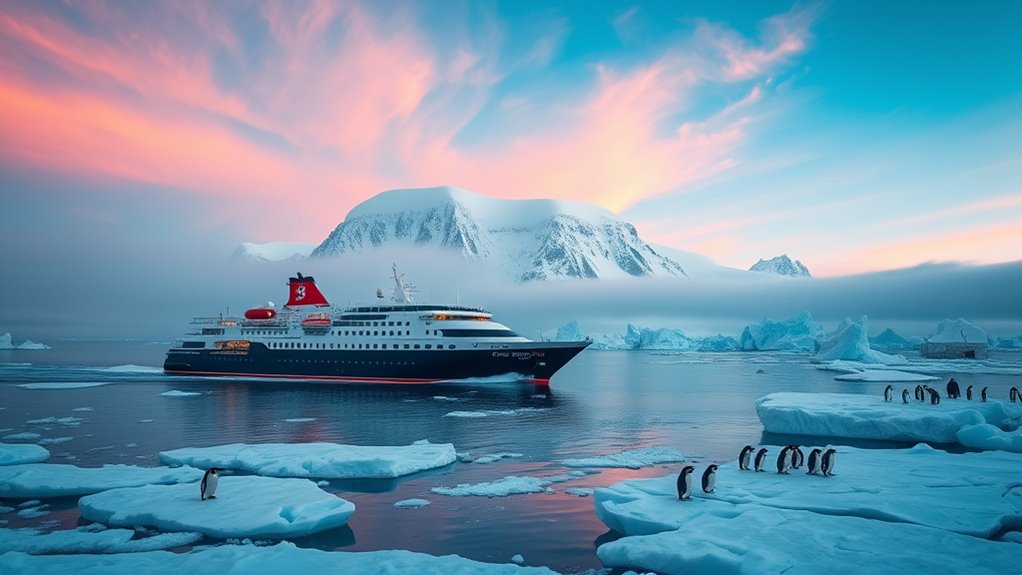
Antarctica’s exploration history is a proof of human perseverance and curiosity, driven by daring expeditions across some of the most hostile environments on Earth. During the Heroic Age of Polar Exploration (1895–1922), explorers like Robert Falcon Scott, Ernest Shackleton, Roald Amundsen, and Douglas Mawson pushed the limits of endurance, often relying on rugged expedition ships to reach the icy continent. The first sighting of Antarctica came in 1820 by Russian explorers Bellingshausen and Lazarev. While Captain James Cook came close in 1773 near King George Island, he never saw land. These early efforts laid the groundwork for future scientific investigations, turning Antarctica into a symbol of exploration and human resilience.
Planning Your Journey: When and How to Book
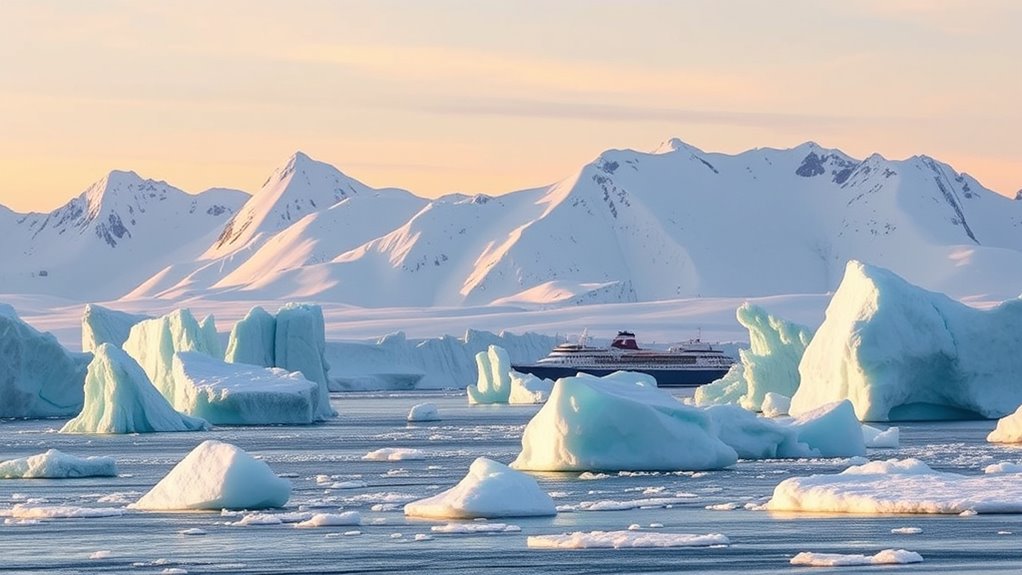
Planning your journey to Antarctica requires careful timing and early preparation. The best time to book your Antarctica Cruises is during the Southern Hemisphere summer, from October to March, when weather conditions are most favorable. To secure your preferred cabins and travel dates, make early reservations, often a year or more in advance. Many operators offer early bird discounts and promotions for those booking early. Confirm your travel dates early to coordinate flights, accommodations, and permits.
| Booking Tip | Details |
|---|---|
| When to book | A year or more ahead for best selection |
| Why early reservations | Secure preferred cabins and dates |
| Benefits of early booking | Discounts and better planning options |
Activities and Adventures Offered During Cruises
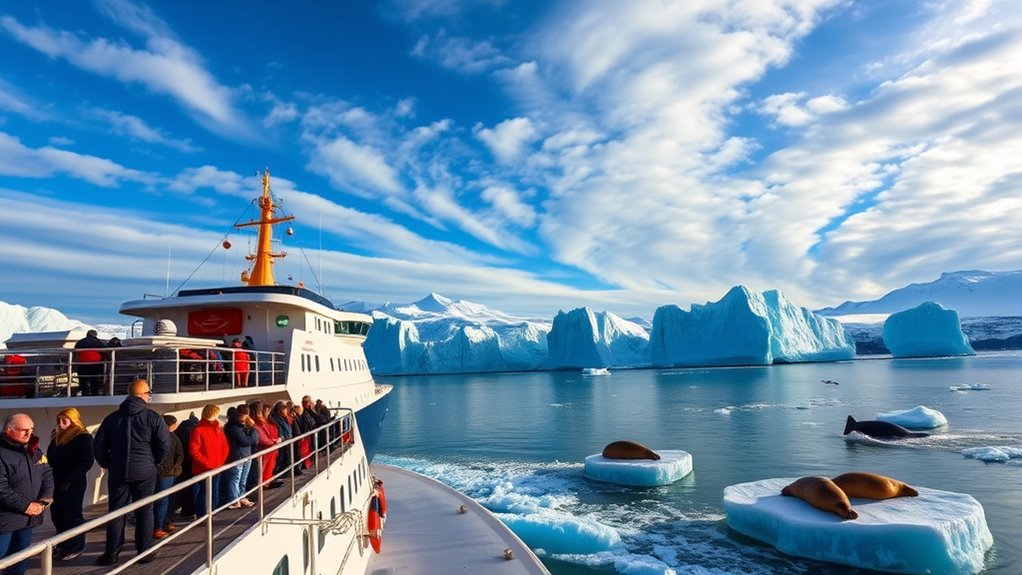
During your Antarctic cruise, a wide range of activities and adventures await to enhance your experience. Zodiac excursions let you get close-up wildlife viewing of penguins, seals, and whales in their natural habitat. If you’re feeling adventurous, kayaking in protected coves and icy fjords offers an immersive Arctic experience, allowing you to glide through stunning landscapes. Some voyages feature ice-class expedition ships equipped for snowshoeing and hiking on glaciers and rugged terrain, giving you active ways to explore the landscape. Underwater adventures are also available, with panoramic submarines and snorkeling gear for exploring beneath the ice. Many cruises include educational programs and citizen science projects, where you can participate in observing penguin colonies or tracking whale movements, making your journey both exciting and meaningful.
Essential Tips for Preparing for Your Antarctic Voyage
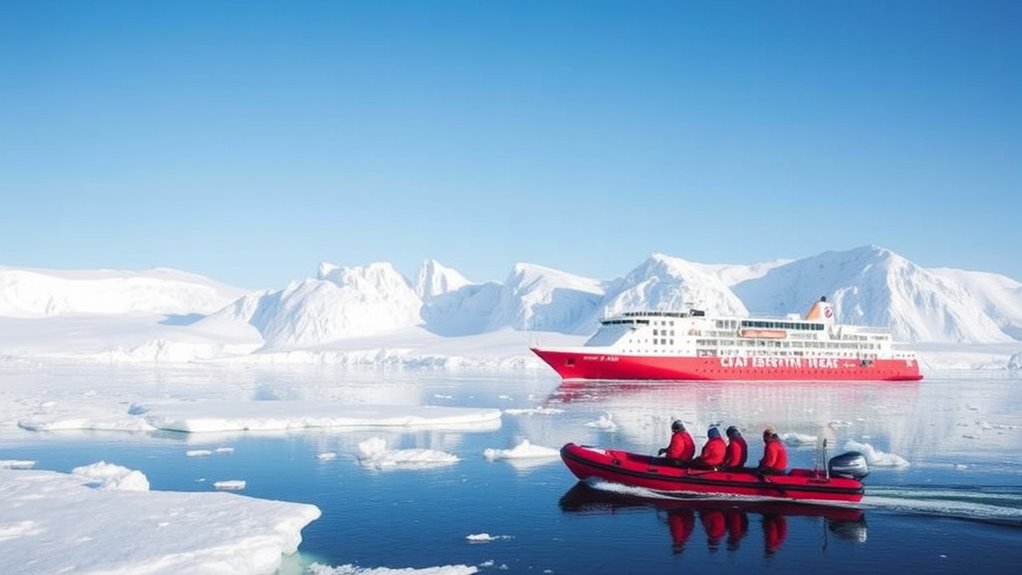
Preparing effectively for your Antarctic voyage guarantees you stay comfortable and safe amidst the unpredictable conditions. Work closely with expedition leaders to understand the ship’s packing list and gear requirements. Pack layered clothing, including thermal base layers, waterproof shells, and insulated jackets, since temperatures in the Antarctic Circle can range from -2°C to 8°C during summer. Don’t forget sturdy waterproof boots, warm hats, gloves, and waterproof pants for shore landings and zodiac excursions. Protect yourself from the intense UV rays reflected off the ice with polarized sunglasses and high-SPF sunscreen. Bring essential gear like a camera with extra batteries, binoculars, and a waterproof bag for wildlife viewing. Proper preparation ensures you’re ready to explore the White Continent comfortably and safely.
Frequently Asked Questions
How Much Does an Antarctica Cruise Cost?
You’re wondering about the cost of an Antarctica cruise. Typically, you should budget around USD $13,000 for a basic twin stateroom, but prices can go much higher depending on the itinerary, ship, and amenities. Longer, luxury, or exclusive trips like fly-cruise options might cost over USD $30,000. Don’t forget extra charges for activities like diving or private excursions. Early bookings and promotions can help you save on your adventure.
Which Cruise Line Is Best for Antarctica?
You want to find the best cruise line for Antarctica, and it depends on what you value most. If luxury is your priority, Silversea offers all-suite, high-end experiences. For responsible tourism and immersive exploration, Aurora Expeditions is ideal. Viking provides expert-led adventures with comfort, while Atlas focuses on active, expedition-style journeys. Choose based on whether you prefer luxury, sustainability, active pursuits, or a mix of adventure and comfort.
How Long Is a Cruise to Antarctica From the USA?
Imagine you’re stepping into a time machine — a cruise to Antarctica from the USA usually lasts between 12 and 21 days, including travel and expedition time. The actual voyage is around 9 to 15 days, but adding flights and stops in places like South Georgia or the Falklands can extend your trip to about 15 to 25 days. You’ll want to plan accordingly for this incredible journey.
What Is the Best Company to Travel to Antarctica From the USA?
You want the best company to travel to Antarctica from the USA, and it depends on what you’re looking for. Aurora Expeditions offers responsible, expert-led small-group adventures. Viking provides luxury cruises with all-inclusive amenities, while Silversea delivers ultra-luxury experiences with fly-cruise options. If you prefer an adventure-focused, intimate voyage, Atlas Ocean Voyages is ideal. Consider your priorities—luxury, adventure, environmental impact—and choose the company that best matches your travel style.
Conclusion
Beginning an Antarctica cruise opens a frozen kingdom teeming with life and wonder. Imagine stepping into a shimmering icy tapestry, where each sunrise paints the glaciers in gold and every encounter with wildlife feels like discovering hidden treasures. With careful planning and curiosity as your compass, this journey becomes a voyage through an untouched, icy masterpiece—an adventure that leaves your soul echoing with the silent beauty of the polar wilderness.

